It is known that the formation of a flood can be determined by several factors, such as the location of the settlement, the catchment area of the flowing river, and its water yield; the season, weather conditions, including temperature, amount and distribution of precipitation.
Budapest is bisected north-south by the largest river in Europe, the Danube, which enabled the development of numerous settlements, and also provided natural resources, construction materials, provided protection, and at the same time ensured trade routes. In addition to the listed positive effects, the inhabitants of the settlements formed along the Danube had to reckon with the continuous changes of the river as a natural element. The Danube regularly overflowed before its regulation - this is indicated by the sandy and gravelly sediment layer in the bed. Frequent fluctuations in water flow and ice jams were a serious source of danger. For 200 years now, since 1823, a water gauge has been in operation in the city of Pest.
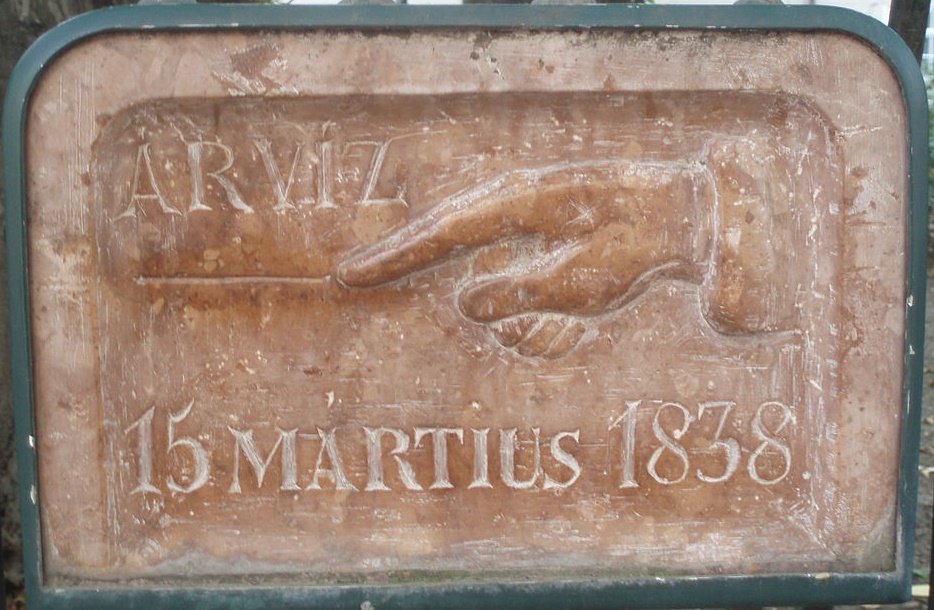
The sign indicating the flood level of 1838 on the fence of the National Museum, on the Bródy Sándor Street side (Photo: Wikipedia)
On the rivers and streams of Central Europe, including the Danube, two tidal waves can most often be distinguished. The ice flood occurs at the end of the winter months, the green flood typically occurs in the first half of the summer. It is no coincidence that the idea of river regulation first came up after the significant ice drifts of 1775. The height of the water level at that time was considered as a measure. A reinforced protective dam was built in Pest, but this was neglected on the Buda side. The renowned hydraulic engineer Pál Vasvári (1795–1846) drew attention to the possibility of a major flood at the beginning of March 1838.
Unfortunately, the flood predicted by Vasvári came true in the same month. Due to the combined effect of several factors, lower coastal areas in Pest, Buda and Óbuda were submerged for days. As a result of the significant easing of the weather, the snow cover in the western catchment areas of the Danube began to melt rapidly. At the same time, the temperature around the freezing point remained in the Carpathian Basin, so the flood could not decrease in the icy riverbed.
.jpg)
Contemporary engraving of the rescue, 1838
The great Danube flood between 13 and 18 March caused considerable destruction in Pest-Buda. The lower-lying Pest side was particularly badly damaged. In Pest, the water did not only flood the inner city area but also caused significant damage in Ferencváros and Józsefváros, which were considered outer districts at the time. Only the slightly prominent areas remained dry. The flood peaked on 15 March; at that time the water was extremely high in all three cities. The highest water level was measured along a dry, low-lying branch of the Danube (on the route of today's Outer Ring Road), in the also low-lying areas of Józsefváros, Ferencváros and Terézváros, the water depth reached two metres, the maximum of 2.6 metres was at Ferencváros.
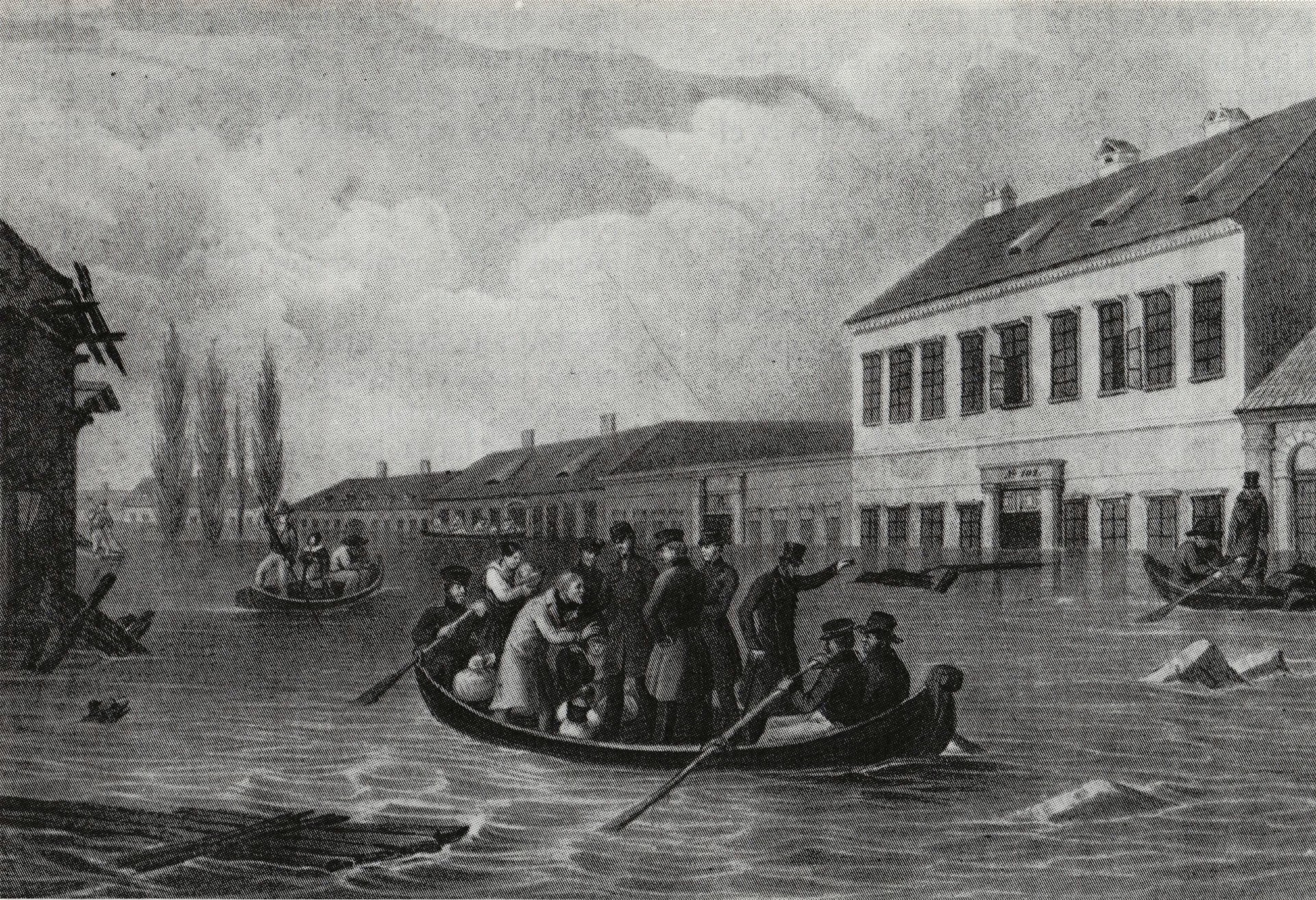
Fighting the flood on Üllői Road on the lithograph by Károly Klette (Source: Ferencvárosi Local History Collection)
The higher parts of the Buda side were less threatened by the flood, but it still caused great damage in Víziváros. Since the population and the city administration, trusting in the reinforced protective embankments, did not expect a flood of this magnitude, the rescue work did not start until 14 March 1838. The height of the embankments also reached the level of the largest flood of 1775. However, the dams could not withstand the enormous water pressure and broke through. Palatine Joseph appointed János Lónyay as royal flood commissioner to organise the rescue.
The population was rescued by boats. Efforts were made to evacuate people to the floors and attics of stronger houses or higher suburban houses. About 50,000 residents lost their homes as a result of the flood. Ten thousand people were given temporary accommodation in the then-new Ludoviceum building in today's Ludovika Square. Even the churches and monasteries in the inner city with a stronger structure were soon filled with refugees, such as the Lutheran church on Deák Square or the Franciscan church on Ferencesek Square.
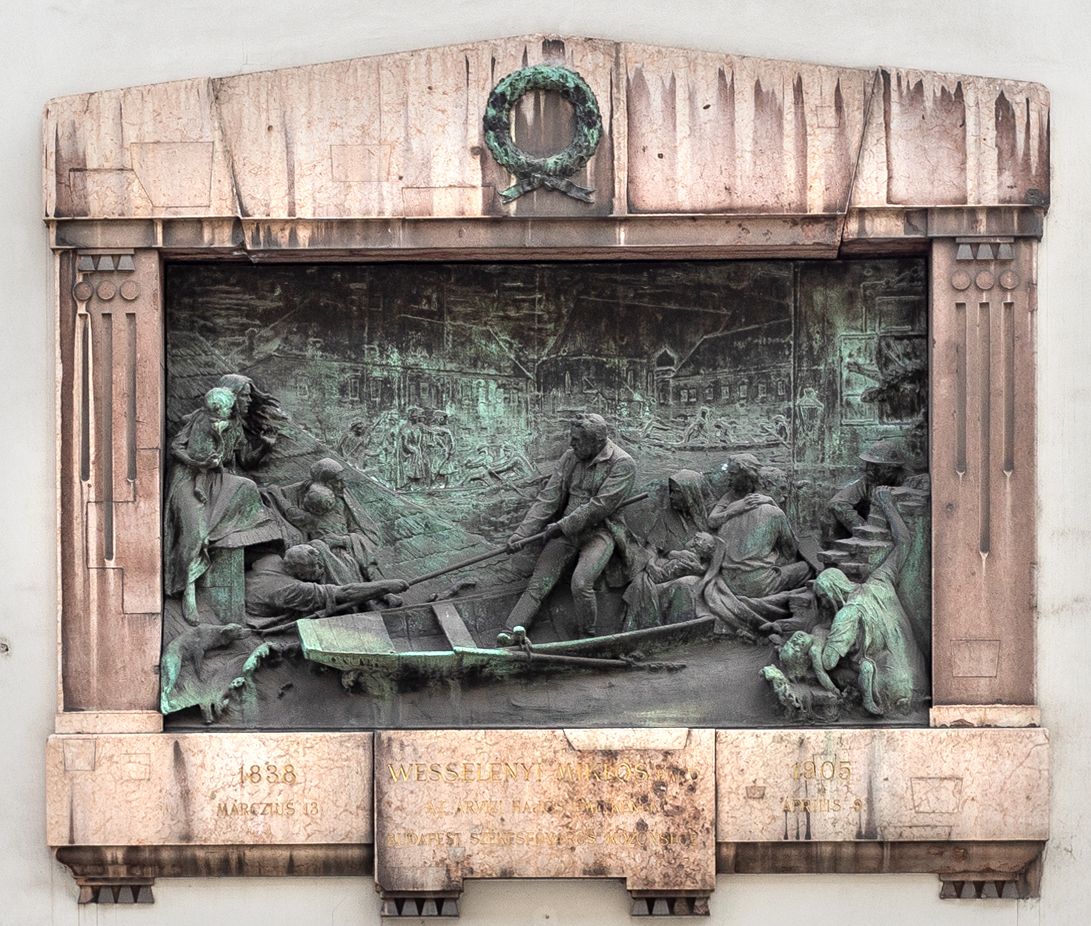
The relief made in memory of Miklós Wesselényi, "The Boatman of the Deluge", on the exterior facade of the inner city Franciscan church (Photo: Balázs Both/pestbuda.hu)
Many bravely took part in the rescue. The most famous of them was Baron Miklós Wesselényi (1796–1850), who is still respected by posterity as the "Boatman of the Deluge". The flood receded in a few days. The significant damage can also be traced back to the building materials used at the time (such as adobe), the dense construction and the construction technology without a foundation.
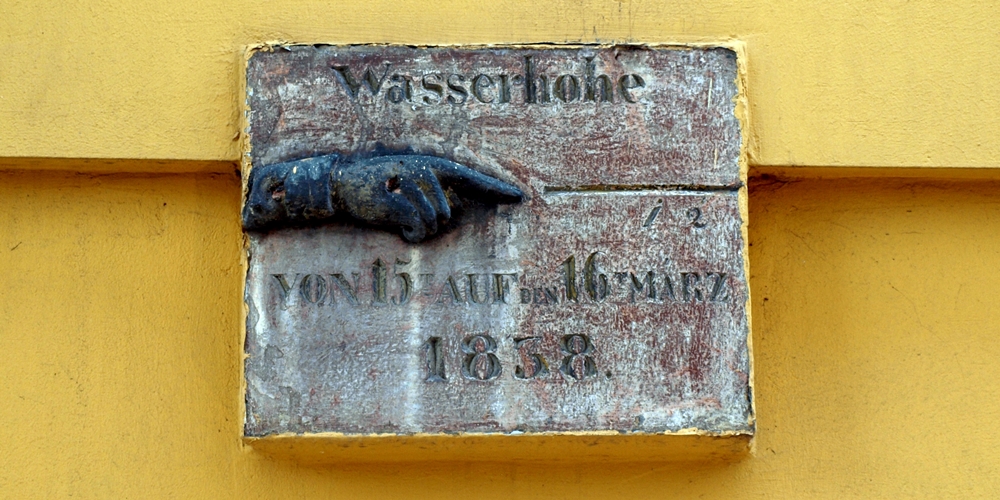
Sign indicating the flood level (Photo: Zsófia Viczián/pestbuda.hu)
During the flood, according to contemporary records, 2,281 houses on the Pest side were destroyed, 827 were seriously damaged, and 1,146 remained intact. At the same time, a total of 204 houses collapsed in Buda, 262 were seriously damaged, while 2,023 buildings remained undamaged. The majority of the 22,000 residents who became destitute were from Pest, just as 151 of the 153 victims of the flood were from Pest.
The great Danube flood destroyed not only in Pest-Buda but a total of 24 settlements on the Hungarian section of the Danube from Esztergom to Szabadszállás. A total of 10,000 houses were destroyed, and another 4,000 were damaged. According to estimates, the amount of flood damage ranged from 14 to 70 million HUF.
The gathering and assessment of the damage began immediately after the flood receded. On 10 April 1838, the Pest-Pilis-Solt County General Assembly decided on the methodology of the gathering of the information, the proposal of which was based on the professional recommendations of the Beautification Committee set up by Palatine Joseph in 1808. A wide range of donations has started here and beyond the borders; Ferenc Liszt, for example, gave eight concerts in Vienna, the proceeds of which supported the restoration. Construction regulations were tightened during the works. In several places, memorial plaques were placed, reminding of the flood water level in the given place.
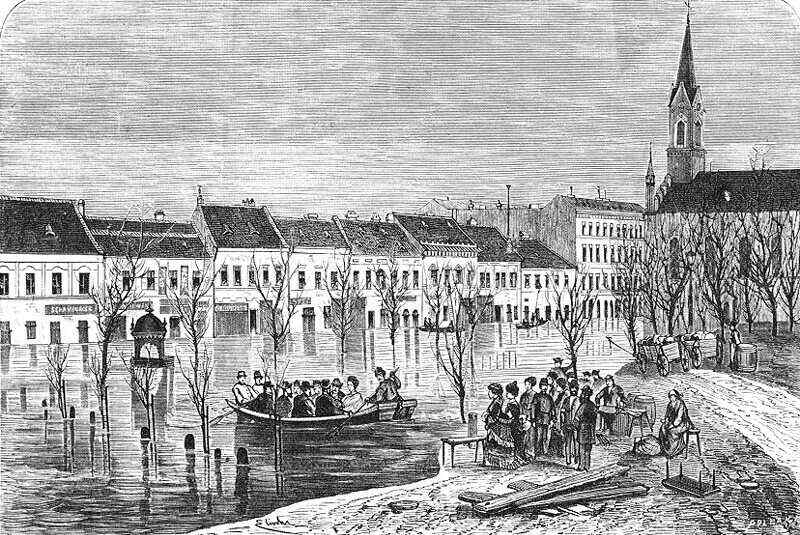
Fő Street in Buda under water during the flood of 1876 (Source: László Tarr: Country of Mirages [Délibábok országa], Magyar Helikon, Budapest, 1976)
The lessons learned from the 1838 flood gave a big boost to the plans aimed at regulating the Danube. The debates during the Reform Era were only followed by the realisation after the Compromise. Ferenc Reitter repeatedly raised the idea of regulating the Danube. The regulatory plans were completed by 1870, and the works actually began in 1872. The new flood protection system was "tested" soon, in 1876: although the ice flood caused minor damage to Buda and Óbuda, the Pest side was essentially saved undamaged.
Cover photo: Johann Hürlimann: Flood on Színház Square in Pest, 1838 (coloured aquatint)

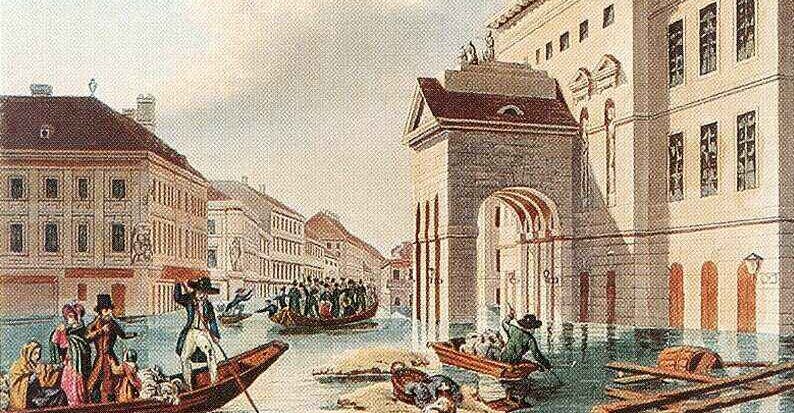

































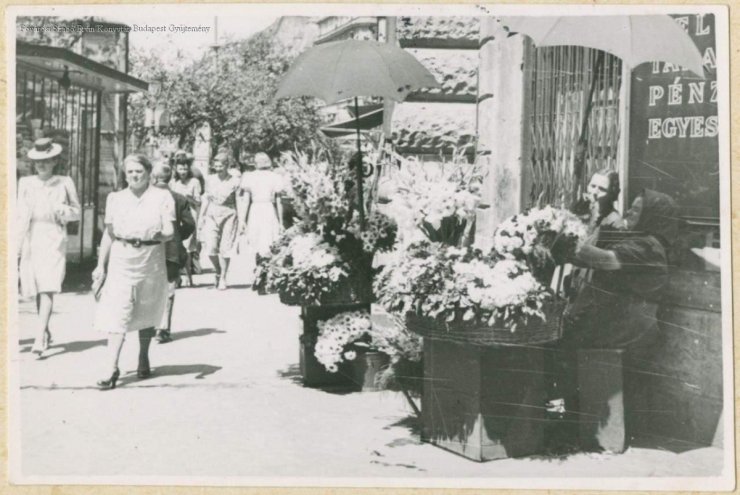
Hozzászólások
Log in or register to comment!
Login Registration